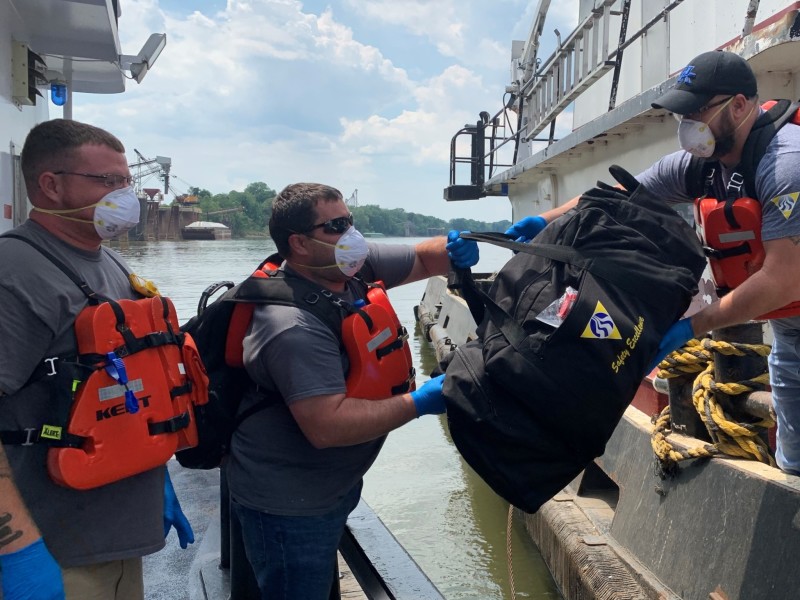A new Coast Guard report shows just how dangerous it can for towing industry workers. At the same time, the report also shows that the rate of fatal injuries remains low.
Slips and falls into the water were the top cause of death on freight-carrying towing vessels and barges in 2022, while the industry recorded the second-lowest rates in crew fatalities and tank barge spills last year.
These are some of the conclusions in the Coast Guard-American Waterways Operators Annual Safety Report, released by the Coast Guard Office of Investigations and Causality Analysis in August. The report evaluated crewmember fatalities, gallons of oil spilled from tank barges, and the number and severity of towing vessel casualties.
The crewmember fatality rate per 100,000 towing industry workers is projected to be 3.8 in 2022, the second lowest recorded since reporting such incidents started, after the 1.9 recorded in 2021. The rate for 2020 was 10.6.
There were four deaths related to vessel operations last year, compared to two in 2021 and 11 in 2020. The highest rate between 1994 and 2022 was recorded in 1997 with 34 deaths.
A total of nine deaths were reported, with four related to towing vessel or barge operations, and the others attributed to natural causes and a drug overdose.
The four deaths related to vessel operations involved falls into the water while moving a dredge pipe, being crushed between the towing vessel and a barge, being struck by a line, and thrown into the air and landing on another barge while installing deck rigging and being hit in the head by a suspended load while involved in crane operations.
Over the last 22 years, from 2000 to 2022, falls into water accounted for 44% of fatalities, followed by asphyxiation (18%), being crushed between objects (11%), and struck by moving objects (10.5%).
Overall, there were 95 incidents involving towing vessels or barges in 2022 that resulted in 101 crewmember injuries, the majority of which were minor or moderate in severity, caused mostly by working with lines, wires or winches.
As for oil spills, the report shows that 3,109 gals. of oil were spilled into U.S. waterways from 48 incidents involving tank barges in 2022 - the lowest spill volume recorded since 2010 and the second lowest ever. The 2022 spill rate was .05 gals. of oil per million gallons transported.
The four largest tank barge spills were caused by a transfer hose being pinched between two vessels, a malfunction with the transfer hose handle resulting in overfilling a day tank on a vessel, a tankerman failing to monitor tank levels adequately thus causing a spill, and a tankerman failing to reduce the flow rate when nearing completion of an oil transfer, resulting in overfilling a tank. In two of these incidents, a high-level alarm and overfill alarms failed to work.
Oil spills also occurred on towing vessels, caused by a crewmember leaving the engine room during an internal oil transfer, resulting in overfilling a tank, a beam falling and puncturing a fuel tank on a towing vessel as it maneuvered into dry dock, and the sinking of two moored towing vessels.




